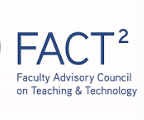Instructor: Danica Savonick – Assistant Professor of English
Course/Department: English
Institution: SUNY Cortland
Subject: English
Description
This semester, instead of Blackboard, our course will use a customized site built using the WordPress.org content management system. WordPress.org is the free, open-source software upon which 34% of the world’s websites are built. This means that as you complete the assignments for this course (post blogs and comments, learn to incorporate multimedia, etc.), you are increasing your digital literacy and developing a transferable skill that is highly valuable to employers beyond the classroom. While it can initially be frustrating that our course isn’t on Blackboard, students often come to appreciate WordPress and continue to use that platform to build personal and professional websites.
One-time registration: Before you are able to access readings and write blogs on our course site, you will need to register. For this course, you will be writing blogs that are publicly available. For that reason, I encourage you to sign up for an account with a username that will not disclose your identity. Often, students choose to use their first name and last initial.
Recommended Number of Students: 8 – 25
Time Requirements (Approximate):
At the beginning of the semester, you will sign up to write one blog about the assigned reading and serve as a discussion leader for one of our course sessions. In order to receive full credit your blog must…
- Be uploaded by NOON the day before class so other students have ample time to comment
- Meet the minimum length requirement: 700 words (most students aim for around 800 words, roughly 3 solid paragraphs)
- Focus on analysis rather than summary
- Draw our attention to something specific about the assigned reading, helping us to see it in a new way
- Incorporate and analyze quotes from the assigned readings
- Be thoughtful, organized, and carefully proofread
- Include proper MLA in-text citations as well as a Works Cited at the bottom of the post
- Conclude with two robust discussion questions. (We will go over how to ask excellent questions. NOT: what did you think about the reading? Did you like my blog post?)
Your blog does not have to address every aspect of the assigned readings; instead, the best posts will have a main argument (thesis), make 1-2 observations, and elaborate on these observations: exploring their implications and using these observations to raise new questions. The deliberate use of images, music, video, and supplementary materials is encouraged.
Some options for your blog post:
- trace a significant pattern you see developing throughout a text.
- illustrate an important connection between two texts, such as a common question they both take up.
- provide historical context or a theoretical perspective that reveals something about a text.
- connect an example from the text to something going on in the world beyond the classroom.
- creative option: translate an excerpt from the reading into another medium — a drawing, poem, painting, short narrative, dialogue, collage, etc.
